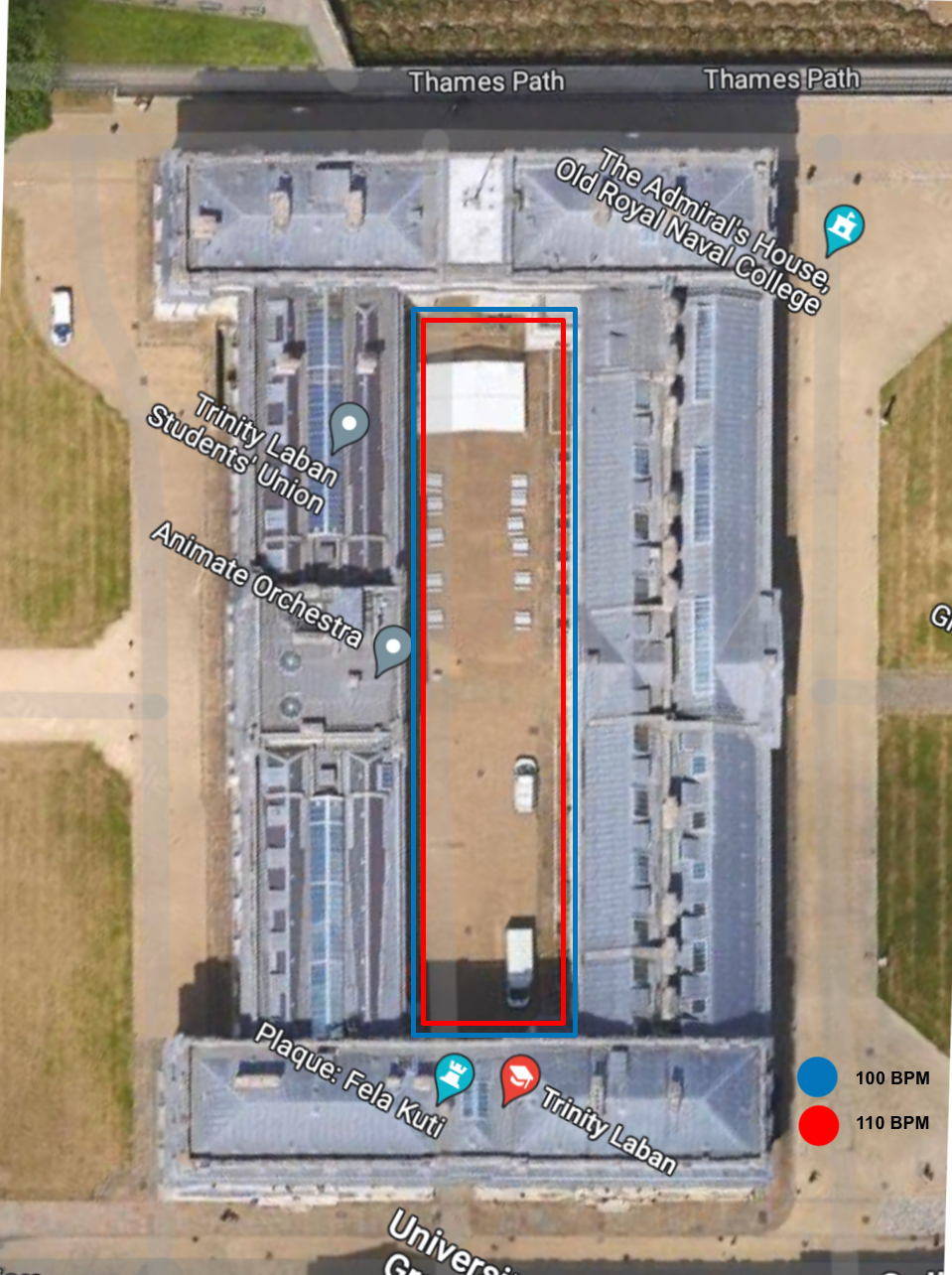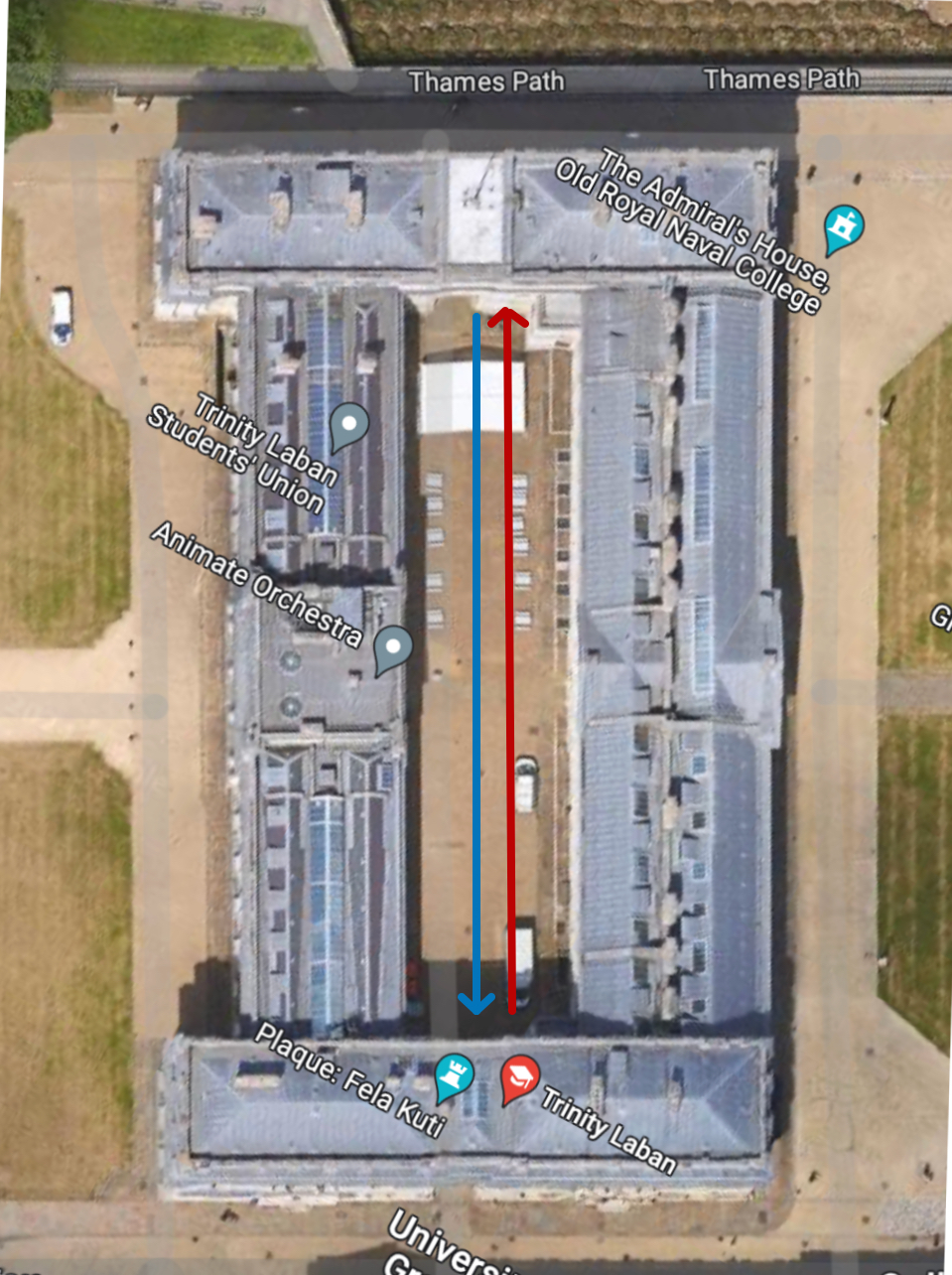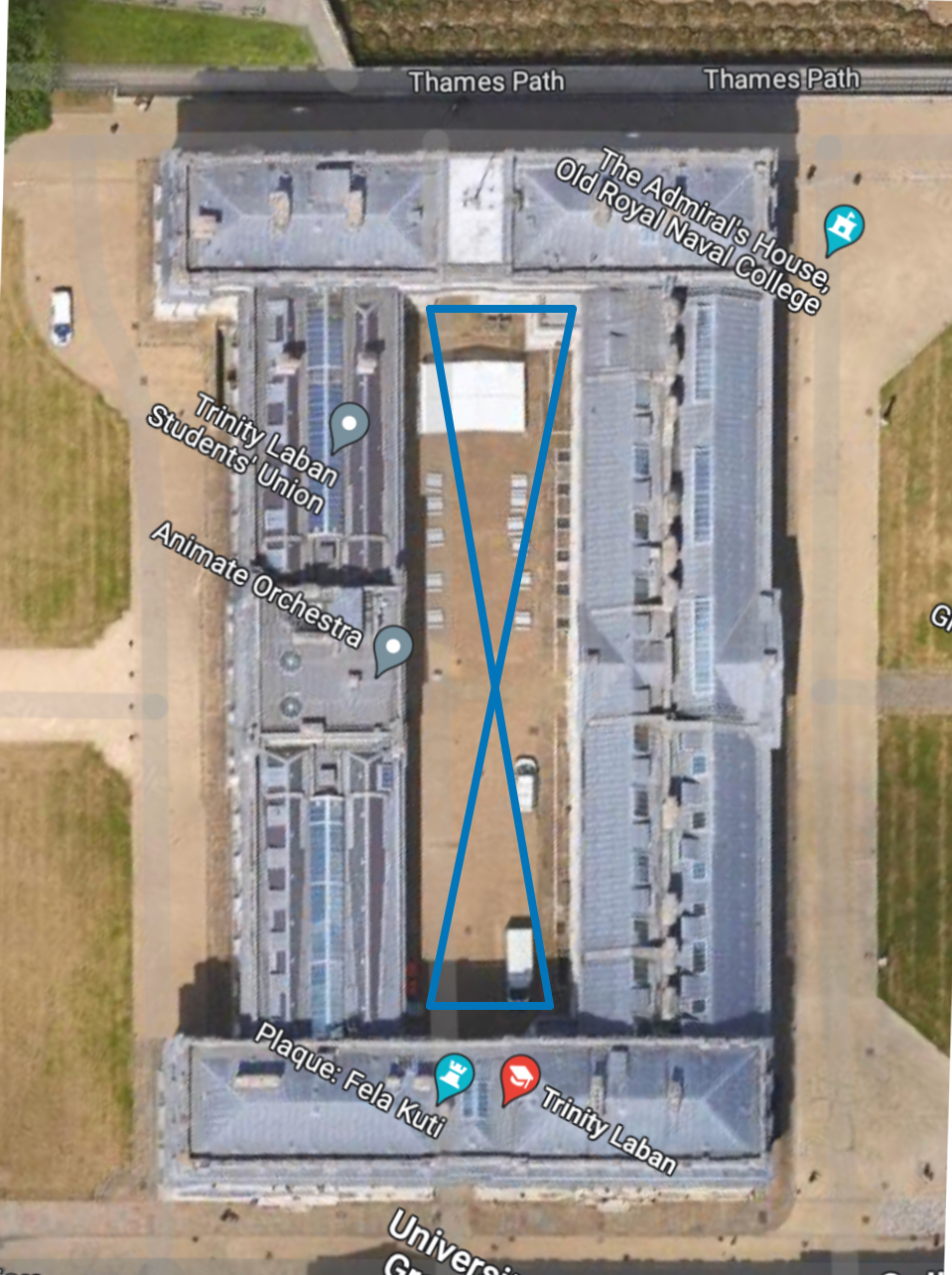Geographical phasing considers the former of these forms. Two people with audio recorders walk around a space listening to different BPMs in headphones. In ‘Study 3: Trinity Phase 100 BPM vs 110 BPM’, the performers walked clockwise around the Trinity College of Music at different speeds (see diagram A). This result shows the audio field starting together, gradually falling out of sync and eventually syncing back up.
Geographical Phasing
-
Phasing, as pioneered by composer Steve Reich, began in 1968 with Reich’s composition ‘It’s Gonna Rain’. In this, two identical tape loops play but one at a slightly faster speed. The tape starts the same but slowly creeps out of sync before the faster tape eventually syncs up with the first. In this instance, the phase comes from two different BPMs (Beats Per Minute). This is in contrast to how Reich uses phasing in compositions such as ‘Clapping Music’. Here, two musicians repeat a rhythmic motif. One continues to play the original motif throughout while the other sequentially starts at a different point in the motif after 8 bars.


Volume phasing is similar to the latter of the Reich examples. ‘Volume’ in this context is not referring to the overall volume of the final recording, but rather of individual sounds within an audio field. The BPM stays the same for both performers but the audio field sequentially changes. In ‘Study 4: Trinity Line’, two performers walk from the opposite ends of the Trinity Courtyard (see diagram B). The audio field begins out of sync, synchronises where the two performers pass each other, and finishes out of sync.

The same technique has been used for ‘Study 1: Trinity Figure of 8’, where two performers walk the opposite direction of a figure of 8. Here, the audio field begins in sync, falls out of it, syncs up when the performers pass each other, falls out of sync again, and finally syncs up when both performers finish their figure of 8.
In postproduction, performer one is panned entirely left and performer two entirely right. This gives the effect of instruments moving around a stereo field. This is best shown in the Saxophonist in ‘Trinity Figure of 8’ 40 seconds – 1 minute in. The saxophone can be heard only from the right speaker but then gradually moves over to the left.